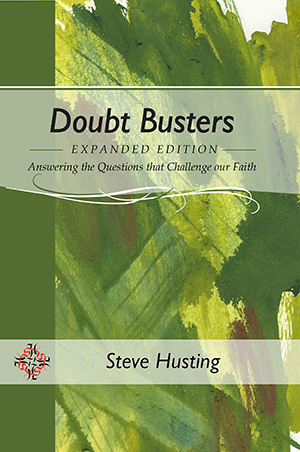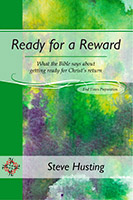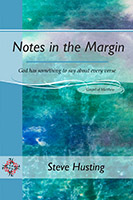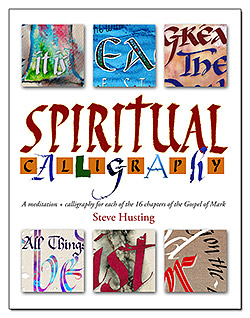In our Bible college class, we were to read Revelation over the course of a week and write up our observations. Here is what I came up with, using the two main headings I was to fill in.
Main Themes
- Visions of Jesus. There are many verses that mention him and his greatness. Chapter 1 shows us the vision of the Son of Man. Chapters 2-3 give us his heart for the churches. Chapter 4:8 reminds us that he is, was, and is to come. 4:11 reminds us that He created all things and they are for Him. Chapter 5 rings with his praises, and that he is the only one worthy to take the scroll. In 6:16 the people see him who sits on the throne and the Lamb’s wrath. In chapter 7 are many taken out of the great tribulation who are before the throne and the Lamb singing his praises. At the seventh trumpet in chapter 11:15-18, twenty-four elders fall on their faces and praise him. Chapter 15 has people who had the victory over the beast and his mark praising him. In chapter 19, we see “the marriage supper of the Lamb” (19:7). Christ comes on a white horse and casts the beast and false prophet into the lake of fire, and kills their army (19:11-20). In 20:7-10, God crushes a satanic rebellion. Then a great white throne is seen, and him who sat on it judged the people (20:11-15). Chapters 21-22 finish the prophecies of the kingdom on earth.
- Persecution and martyrdom. Several passages speak of the persecution and killing of the “saints” (whether of Jews or Christians). The church of Smyrna in 2:8 is expected to die, but they “shall not be hurt of the second death” (2:11) if they overcome, if they are “faithful until death” (2:10), and they shall receive “the crown of glory” (2:10).
The sixth seal of 6:9-11 talks about those “under the altar who had been slain for the word of God.” They cry out, fully aware of their state and waiting for justice, and are given white robes and told to wait until more are martyred. (They are not in an unconscious sleep.)
The two witnesses (11:1-12) give their testimony with signs and wonders, then are killed by the beast from the bottomless pit. Their bodies are raised to life and ascend to heaven. A dragon was ready to devour a woman’s child (potential persecution and death), but the child escapes and so does the woman (12:1-6). The beast is cast to earth where he kills “those who did not love their lives to the death” (12:11). The beast, frustrated at the woman escaping, goes to war “with the rest of her offspring” who “have the testimony of Jesus Christ” (12:17).
A “beast rising up from the sea” (13:1) makes war on the saints and overcomes them (13:7). A beast out of the earth rises up (13:11), and causes people to be killed who do not worship the image of the beast (13:15). They “who die in the Lord from now on” are given a precious promise (14:13) for resisting the mark or worship of the beast. (I need to be reminded that these beasts are not necessarily individuals, but could be earthly systems.) Servants of God are found on the sea of glass in 15:2-4 for their faithfulness, and they praise the Lord.
The sixth bowl of wrath in 16:4-7 turns water into blood as poetic justice for the blood of the martyrs spilled.
- Precious promises. Believers are given many promises in Revelation beginning with 1:3, which is a blessing for those who hear and keep what’s written in it. The letters to the churches in chapters 2-3 end with promises to the overcomers. (This implies some will not overcome. They will not persevere to the end for a reward.) I will list a few more promises, but it’s hard to pin down what is a promise and what is just an encouraging statement, both of which there are plenty.
Chapter 7:14-17 is a promise of a great multitude that will be in the presence of God and serve Him day and night. We can shoot for a place among them. 11:15, 18 have separate promises, that the Christ will reign forever and ever, and that He will reward His servants. In 14:13 is a blessing that those who die in the Lord from now on may rest from their labors, and their works follow them. 15:4 tells us that all nations will come and worship before Him.
Chapters 17-19 promises that the Lord will overcome the beast; Babylon will be beaten, for the Lord is strong; and He has avenged the harlot system that had corrupted the earth. 19:9 is a blessing to those who are called to the marriage supper of the Lamb. 20:6 blesses those who rise in the first resurrection. 20:10 encourages us that the devil with the beast and false prophet will be burned forever and ever. 21-22 is full of promises and hope regarding the kingdom and the relationship with God and man forever.
- Symbolism. I liked how the lecturer said that symbolism adds more context and nuance to the characterization beyond what a mere name could do. “Jesus” is general but “Lamb as though it had been slain” (5:6) is more specific and visceral. Referring to people and human systems as “beasts” (13:1, 11) characterizes them as destroying without mercy, as with any predatory mammal like a wolf. This means we should be distrustful about man-made systems, that they do not have our welfare at heart, only their own. These are literal objects John saw and was told to write down (1:19). John did not turn them into symbols, but recorded the symbols themselves.
Many times, symbolism is not explained and at other times in Revelation they are. The notes in the margin will point the reader to parallel passages in the OT as aids to a general understanding. Unfortunately, people will turn almost any literal thing in Revelation into a symbol and run amok with it. Some symbol explanations only tease, like the 666 being “the number of his name” or the “number of a man” (13:17-18).
In chapter 1, the symbolism in the description of Jesus evokes many startling ideas that take Him beyond the “meek and mild” Jesus we grew up with. Chapters 2-3 ascribe many symbolic terms to Jesus that seem to have reference to what the church was facing, and the symbolism of some of the objects He promises to the overcomers goes beyond what we can imagine. It’s difficult to state with certainty what is a symbol and what is not, so I will pick and choose obvious ones. Chapter 12, the two women, the dragon and child are symbolic to me (because in 1:19 Jesus tells John the time range of what he is to write down, and none of it will take place before what John has seen in chapter 1, so the child can’t be baby Jesus). In chapter 13, the first beast is described with several heads, horns, and crowns, meaning that more than one ruler system in involved. The second beast seems to be an individual. (Seems, because it has two horns like a “lambkin”—in Greek—and such young do not have horns. I’m learning a little more this time around Revelation).
14:14-16 and 17-20 has symbolic reaping taking place. Perhaps the first is reaping the earth of the good, but where it is taken is not said (is it a rapture of the saints?). And the latter is the reaping of grapes that are thrown into a winepress for the trampling of the wrath of God. Chapter 16 has bowls of wrath being poured on the earth, but where the angels are and what comes out of the bowls is not stated. Chapter 17 has a woman sitting on a beast having several heads and horns. She is described as “Babylon the Great” (17:5) and she has spilled the blood of “the martyrs of Jesus” (17:6). There’s no doubt these symbols will be made plainer closer to their time.
Personal Observations
- I have not studied Revelation for a while. I forgot how invigorating it can be. My mind kept trying to put the puzzle pieces together as I read. I remember from the “Storyline of the Bible” Bible college class that one theory of the description of the six days of creation is that the first three days is creating the environments, then the next three days is filling the environments with the creatures that will rule that domain. Then came man who rules over all of them. Then the seventh day is God at rest ruling over everything. So the order of events in Revelation is not what it seems, but has its own internal flow. Perhaps we need to stop looking at the specific events that are portrayed and look for an underlying scheme or schemes. I wonder if it will become more apparent when it is read repeatedly over a whole month with an open mind.
- I saw more of the persecution and martyrdom in Revelation this time around. Jesus is not kidding when He tells us to carry our cross daily and not to love our lives. He expects us to face evil when it traps us and stand against it for the glory of God, even to die rather than deny Him. This denying ourselves for the will of God is good training for this. We see over and over in Acts how much Paul suffered for Christ’s sake. Jesus was the only one worthy to take the scroll because he is the only one who could say, “My judgment is righteous because I do not seek My own will, but the will of the Father who sent me” (John 5:30). How many of us can say this? Do we not tend to seek our own will? He humbled Himself to death, even the death of a criminal, all for the will of the Father. I wonder if Western Christians can really face what is coming (if we’ll be here with the Antichrist figure for a short time). Is the church in America ready for persecution? Are we too pampered? If we see the rapture of the church as an escape hatch, are we really learning the lessons of suffering that draw us closer to Him in dependence and faith? I believe the suffering of the saints is to test and strengthen us, but I think the lessons only work with those who want to learn the lessons, who want to be trained. In our materialistic culture, I fear few want it, choosing short-term happiness over long-term growth. Many of us do not suffer well. We choose cozy over the cross.
- Revelation has many terms to describe Christ. It also has many terms that describe the people of God. I had begun compiling a listing years ago of the terms the Bible gives for the people of God—over a hundred in the list so far. In Revelation we have the following. Note that just as the terms for Jesus give extra meaning, so the names for the people of God are more than general terms like Christian, believer, born again, or baptized; they are very descriptive of their character and works. Do any of these describe you?
Servants (1:1), priests (1:6), they who pierced Him (1:7), your brother (1:9), companion in tribulation (1:9), churches (1:11), lamp stands (1:20), him who overcomes (2:7, 11, 17, 26; 3:5, 12, 21; 21:7), he who has an ear (2:11, 17, 29; 3:6, 13, 22), faithful martyr (2:13), children of Israel (2:14; 7:4).
Elders (4:4), saints (5:8), those who had been slain (6:9), fellow servants (6:11), brethren (6:11), servants of our God (7:3), [tribes of Israel are named], the prophets, (10:7), those who worship (11:1), witnesses (11:2), olive trees (11:4), those who fear Your name (11:18).
A woman clothed with the sun (12:1), child, male Child (12:2, 4), offspring (12:17), 144,000 who were redeemed from the earth (14:1, 3), virgins (14:4), firstfruits to God (14:4), those who keep the commandments of God (14:12), the dead who die in the Lord (14:13).
Those who have victory over the beast (15:2), he who watches (16:15), called, chosen, and faithful (17:14), apostles (18:20), those who fear Him (19:5), His wife (19:5), those who are called to the marriage supper (19:9), brethren who have the testimony of Jesus (19:10), armies of heaven(?) (19:14), those who had been beheaded (20:4), he who has part in the first resurrection (20:5), priests of God and of Christ (20:6), His people, (21:3), My son (21:7), Lamb’s wife (21:9), great city, holy Jerusalem (21:10), nations of those who are saved (21:24), he who keeps the words of the prophecy (22:7), righteous, holy (22:11), those who do His commandments (22:14), him who hears, him who thirsts (22:17).




